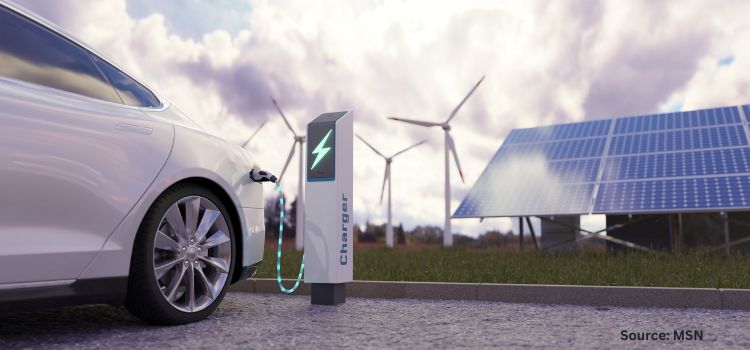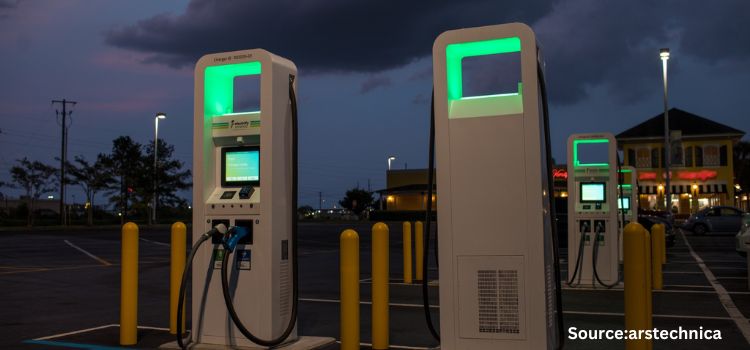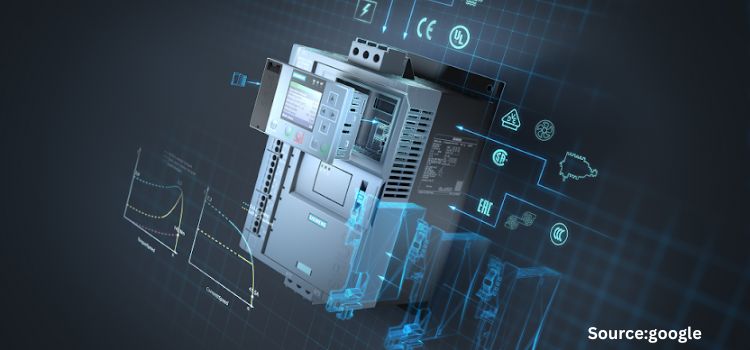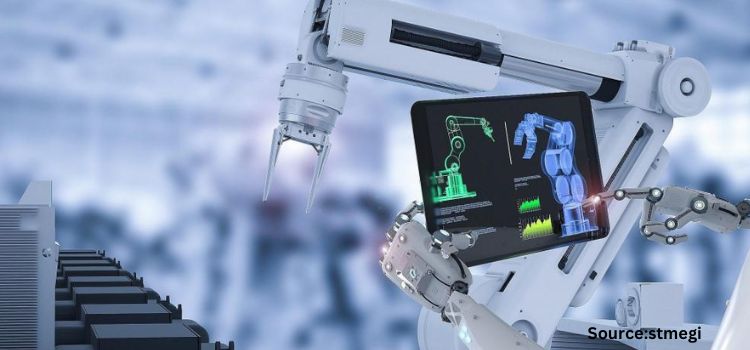How Electric Vehicles Are Revolutionizing The Auto Industry?
15-Feb-2025

Introduction
An electric vehicle (EV) is a category of automobile that runs on electric motors powered by batteries for propulsion. The power can be generated from various sources, such as nuclear power, and renewable sources, like solar and wind power.
Electric vehicles (EVs) are quickly becoming a popular choice for consumers as they are looking for a more sustainable and cost-effective form of transportation. With advancements in technology and a growing awareness regarding the environmental impact of traditional gasoline-powered cars, EVs are becoming an increasingly attractive option for those looking to reduce their carbon footprint and save money on fuel costs.
One of the biggest benefits of EVs is that they reduced environmental impact. Traditional gasoline-powered cars emit harmful pollutants into the air, thus contributing to global warming, climate change, and other environmental issues. On the other hand, EVs are powered by electricity and produce zero emissions, making them a much cleaner and more sustainable option.
Let Us Explore Various Types of Electric Vehicles
There are several types of electric vehicles (EVs) available on the market, some of them are mentioned below:
All-Electric Vehicles (EVs) - These vehicles run solely on electricity and have a limited driving range. They have an electric motor and battery pack but no internal combustion engine. Some examples of All-Electric Vehicles (EVs) include the Tesla Model S, Nissan Leaf, and BMW i3.
Plug-in Hybrid Electric Vehicles (PHEVs) - These vehicles have both a traditional gasoline engine and an electric motor, and can be recharged by plugging them into an electrical outlet. They have both electric and gasoline power sources and can switch between them depending on the driving conditions. Some examples of PHEVs are Chevrolet Volt, Ford Fusion Energi, and BMW i8.
Hybrid Electric Vehicles (HEVs) - These vehicles use a combination of a traditional gasoline engine and an electric motor to power the vehicle, and can also recharge their battery using regenerative braking. They are designed to improve fuel economy, but they cannot be plugged in to recharge the battery. Some examples of HEVs include the Toyota Prius, Honda Insight, and Lexus LS 500h.
Extended-Range Electric Vehicles (EREVs) - These vehicles are similar to plug-in hybrids, but they have a larger battery pack and a smaller internal combustion engine. They can travel a longer distance on electric power alone before the gasoline engine kicks in. Some examples of EREVs include the Chevrolet Volt and BMW i3 REx.
Fuel Cell Electric Vehicles (FCEVs) - Fuel cell electric vehicles (FCEVs) use a fuel cell instead of a battery to power an electric motor. The fuel cell converts the chemical energy of a fuel hydrogen, into electricity to power the vehicle. FCEVs have a longer driving range and can be refueled more quickly than battery electric vehicles (BEVs). Some examples of FCEVs include the Toyota Mirai and Honda Clarity.
Types of Charging Standards in Electric Vehicles
Charging standards in electric vehicles (EVs) refer to the specifications and protocols that govern how EVs are charged and the type of charging connectors and equipment used in charging. These standards define the voltage, amperage, and communication protocols used to charge the vehicle's battery, and are intended to ensure compatibility and safety while charging EVs.
There are different charging standards for EVs, including:
CHAdeMO and GB/T (Guobiao) - CHAdeMO is a charging standard developed by the Japanese Automobile Manufacturers Association (JAMA) for fast charging of electric vehicles. It uses a direct current (DC) connection and can charge a vehicle up to 80% in about 30 minutes.
GB/T (Guobiao) is a charging standard developed by the State Grid Corporation of China for fast charging of electric vehicles. It uses a direct current (DC) connection and can charge a vehicle up to 80% in about 30-45 minutes. GB/T charging stations are widely available in China, but are less common in other parts of the world.
Combined Charging System (CCS) - This is a standard for fast-charging electric vehicles (EVs) that combines the two most commonly used charging connectors: the Type 1 (J1772) and Type 2 (Mennekes) connectors. It also includes a DC fast charging connector that allows for high-power charging. The CCS standard allows for flexibility in charging, as it can work with both AC and DC power, and it's compatible with a wide range of vehicles, regardless of the manufacturer.
Type 1/Normal Charging - Type 1 (SAE J1772), also known as J plug or Type 1 connector, is a type of special electrical connector and North American standard for AC Level 2 charging of an EV. Type 1 is broadly used in the US and Japan, as these countries do not have three phase power grids. This standard is limited to single-phase and lower power output than Type 2. For Type 1, most of the charging cables are permanently fixed to the charging station. It is designed and manufactured for residential and public charging applications. Type 1 (SAE J1772) EV plug is used by automakers such as General Motors, Ford, Honda, BYD, NEO, Mitsubishi, Chrysler, Tesla, Toyota, and Renault-Nissan.
Tesla Supercharger - This is a proprietary charging standard developed by Tesla for its electric vehicles (EVs). It is a high-powered charging system that can charge Tesla vehicles much faster than other charging standards. The Supercharger stations use a specialized charging connector that is only compatible with Tesla vehicles, and the charging process is fully automated, so no action is required from the driver. These stations can charge a vehicle from 0 to 80% in around 30 minutes. It should be noted that Tesla Superchargers are only compatible with Tesla vehicles and Tesla owners can use the Supercharger network for free for the life of their vehicle.
Type 2 - Type 2 charging standard is a European standard for charging electric vehicles (EVs) that uses an alternating current (AC) connection. It is also known as the Mennekes connector, named after the German company that developed it. The Type 2 connector is used for both slow and fast charging of EVs, and supports a maximum charging power of 43 kW.
Type 2 charging stations can charge an EV up to 80% in about 4-8 hours, depending on the vehicle and the charging station. Type 2 charging stations are widely available in Europe and some parts of Asia, and it is the standard used in most EV cars sold in Europe.
Level 3 - It is also known as DC Fast Charging, which refers to the process of charging an electric vehicle (EV) by using a direct current (DC) power source to charge the vehicle's battery at a high rate. It can charge an EV up to 80% in around 30 minutes, depending on the specific charging equipment and the capacity of the EV's battery.
Level 3 charging stations are commonly found in public places such as highway rest areas, shopping centers and parking garages. These stations are also known as fast charging stations and are available in many countries.
.jpg)
Status of Electric Vehicles in Major Economies
United States is extensively pushing the development and innovation in EV industry owing to the growing advancements in battery technology, increasing consumer interest, and government policies to promote clean energy and reduce greenhouse gas emissions. As of 2021, there were over 2.2 million EVs on the road in the United States, and this number is expected to continue to grow in the coming years. The most popular EV models in the US market are Tesla Model 3 and Model Y, Chevrolet Bolt, and Nissan Leaf.
The U.S. government has set a goal to have 20% of all new vehicle sales be EVs by 2030, and several states have set even more ambitious targets. To support this goal, the federal government offers a tax credit of up to USD 7,500 for EV buyers, and many states also offer additional incentives such as rebates, carpool lane access, and reduced parking and charging fees.
However, there are still challenges to overcome in the EV industry in the United States such as lack of charging infrastructure in rural areas, and the cost of EVs, which is still higher than conventional vehicles for many consumers.
China has made significant advances in the field of EVs in recent years driven by government policies to promote clean energy and reduce pollution, as well as advances in battery technology and increasing consumer interest. As of 2021, China is the world's largest market for EVs, with over 4 million EVs on the road, and this number is expected to continue to grow in the coming years. The most popular EV models in China are the Wuling Hong Guang Mini EV, Baojun E-Series, and the Jinko Cheetah.
The Chinese government has set a goal to have 20% of all new vehicle sales be EVs by 2025, and has implemented a number of policies to support this goal, such as subsidies, tax exemptions, and mandatory EV quotas for automakers.
Moreover, the presence of key players such as Xpeng Motors, BAIC Motors, SAIC Motors, and BYD Co. which are engaged in developing new strategies to enhance their market presence and dominance in the global market, drives the market growth. However, the Chinese EV industry has been criticized for its reliance on government subsidies and lack of competition among domestic manufacturers.
Competitive Landsacpe
There are numerous companies that are engaged in the manufacturing of electric vehicles. Some of the leading players are fortifying their positions through a range of strategies, including the introduction of new products, partnerships, collaboration, acquisitions, and others.
Next Move Strategy Consulting recognizes at least 5 biggest players in the market including Tesla Inc., BYD Auto Co., Ltd, Volkswagen AG, SAIC-GM-Wuling Automobile, Stellantis, and others.

ABOUT THE AUTHOR
Sikha Haritwal a researcher with more thisan 3 years of experience. She has been keeping a close eye on several industry verticals, including automotive, renewables, and consumer electronics. She has an avid interest in writing news articles and hopes to use blogs as a platform to share her knowledge with others. When she is not following industry updates and trends, she spends her time reading, writing poetry, cooking, and photography. The author can be reached at info@nextmsc.com
Add Comment
Related Blogs
India’s Growing EV Charging Infrastructure: A Detailed Look at Charge Point Operators in 2023
As India accelerates towards a sustainable and environmental...
Siemens, Emerson and Honeywell: Powerhouses in the Distributed I/O Market
The global Distributed I/O Market, valued at USD 3.52 billio...
How Kawasaki and Daihen are Shaping the Future of Wafer Handling Robotics
The Wafer Handling Robots Market, estimated at USD 1.60 bill...











